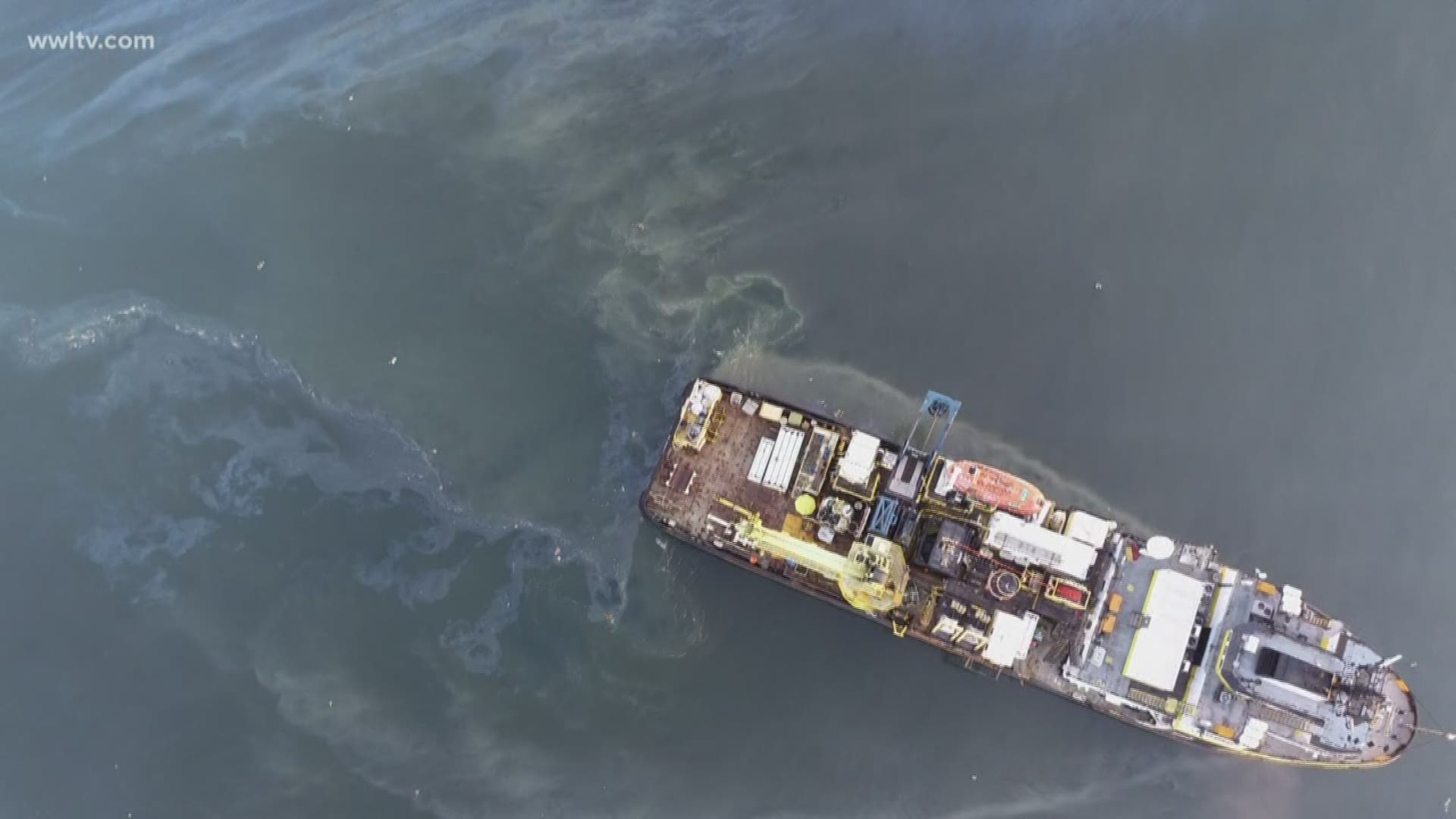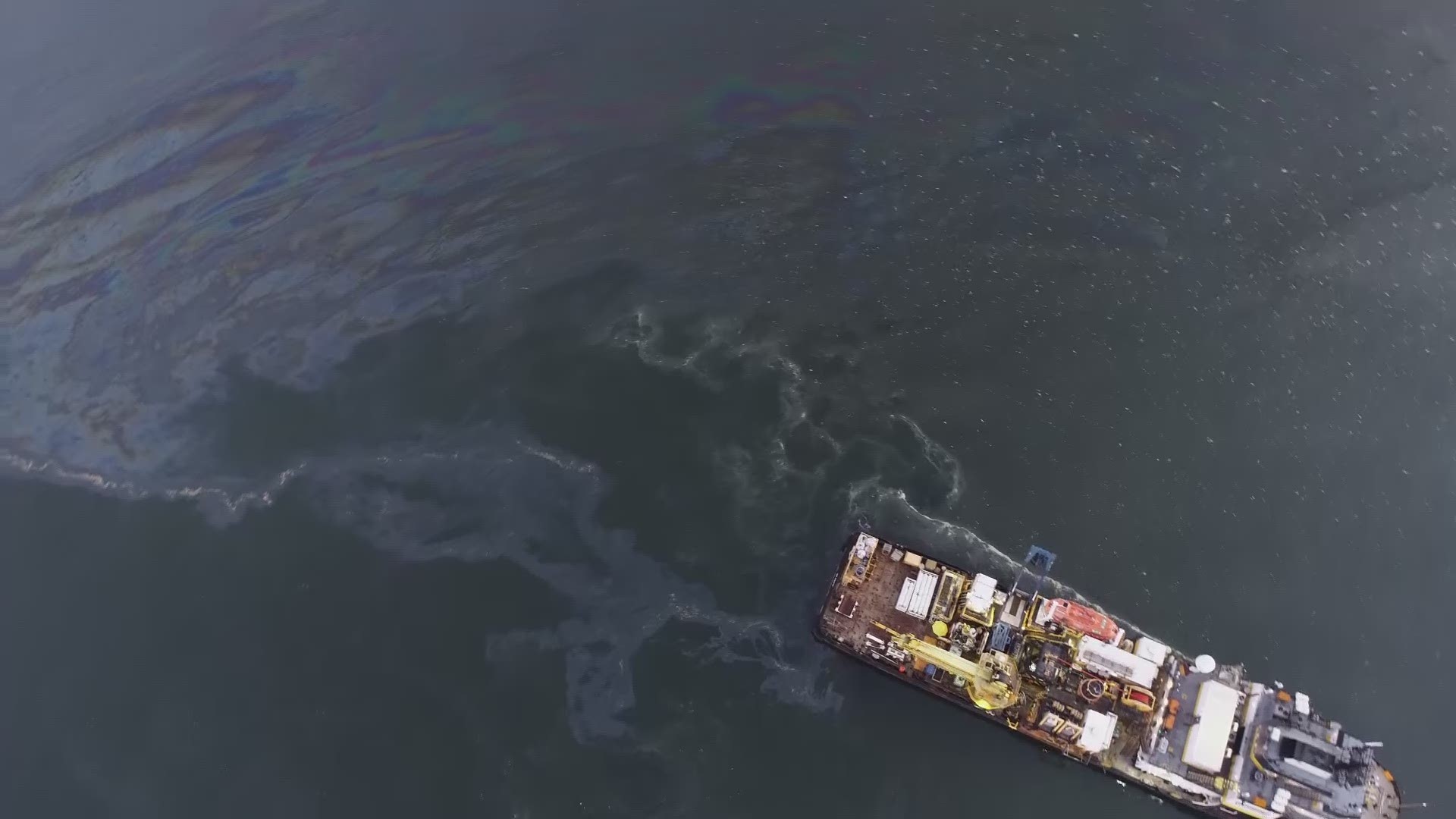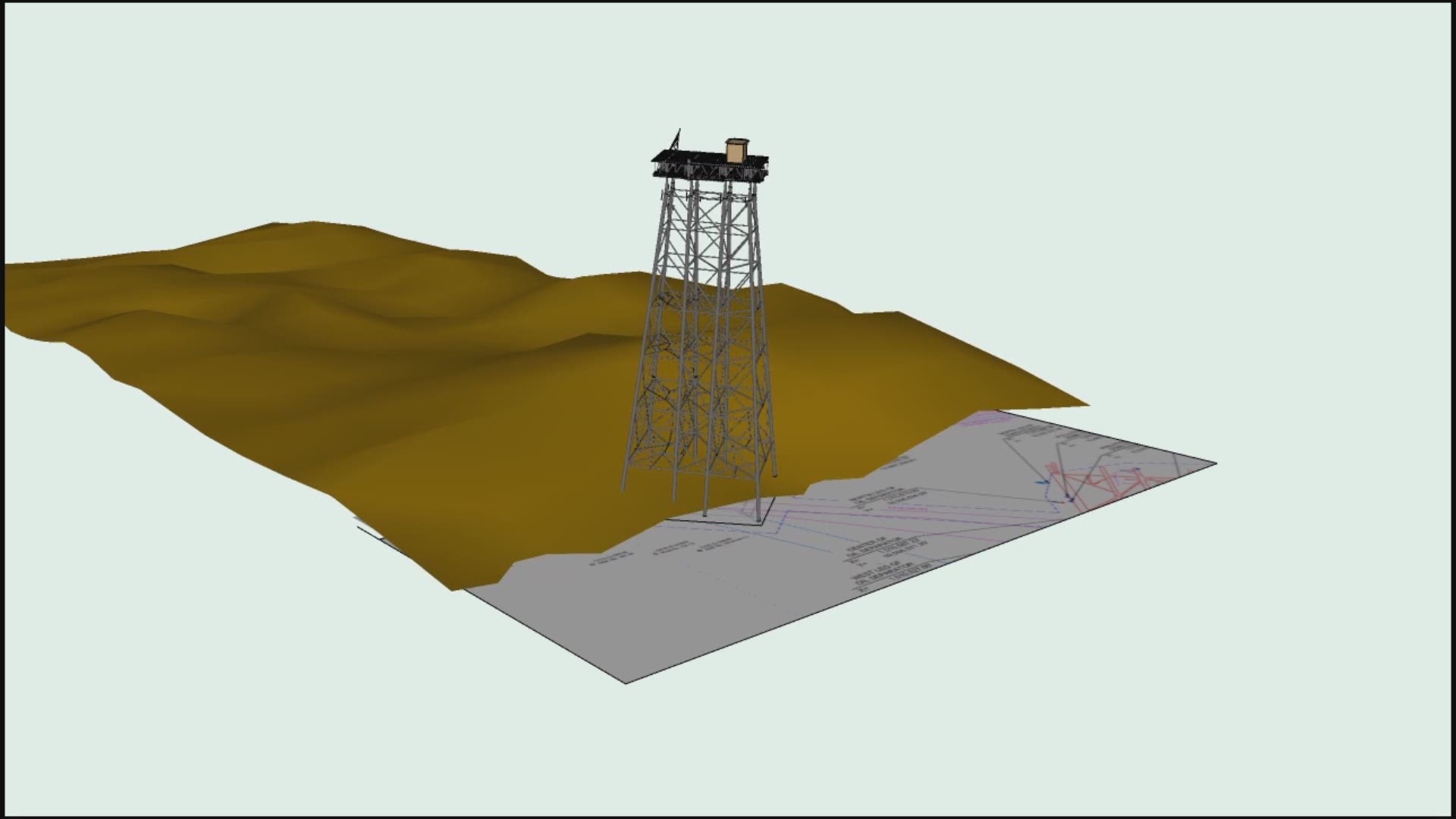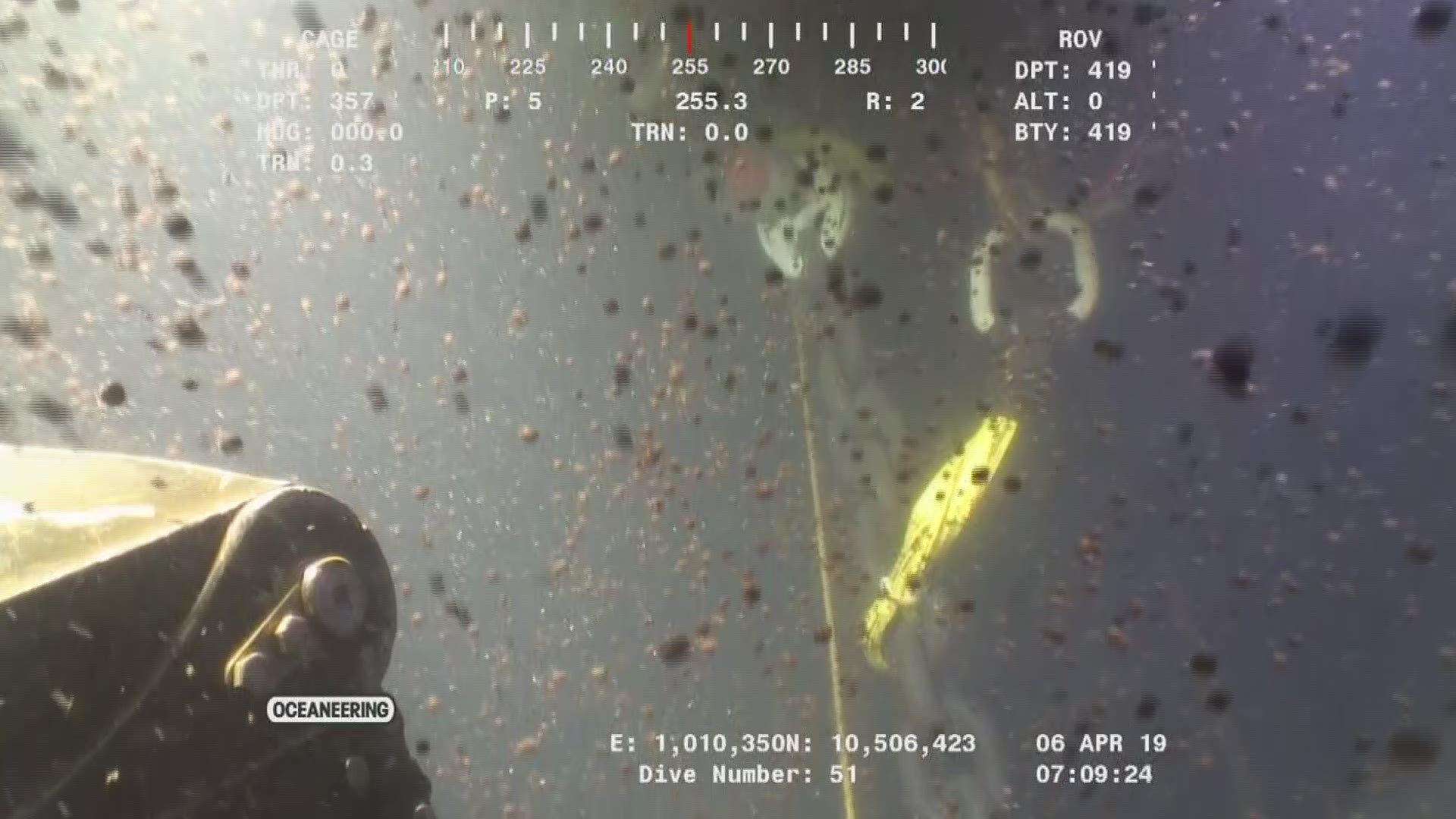NEW ORLEANS — A Belle Chasse-based company is sharing new video, photos and diagrams to show how it managed to contain an oil spill that has fouled the Gulf of Mexico, unchecked, for nearly 15 years.
The Coast Guard announced May 16 that it had completed successful containment operations at the Taylor Energy oil leak site, about 12 miles southeast of the mouth of the Mississippi River at South Pass. The Coast Guard hired the contractor, Couvillion Group, in November after suddenly reversing its position over most of the last decade, that further efforts to contain the leak would cause more environmental harm than good.
Video and photos released by Couvillion suggest that more oil was showing up on the surface of the Gulf as crews worked in March and April to affix a new containment device over the leak, 450 feet below the water’s surface. Swaths of thick brown oil were visible in some of the aerial videos and photos from March, just as Taylor reported seeing upwards of 1,000 gallons of oil during twice-weekly overflights.
WATCH BELOW: Taylor Energy oil spill before-and-after containment
(The first footage, taken on March 23, shows the oil's sheen on the surface of the water. Just more than a month later, footage taken on April 26 shows the progress of the containment effort).
For years, Taylor and the government had been relying on scientific analyses and overflight observations estimating that only 10 gallons of oil were leaking each day. But in 2018, scientists hired by the government and environmental groups released estimates of thousands and even tens of thousands of gallons a day, causing the Coast Guard to federalize the spill response – essentially seizing control of containment operations from Taylor.
When crews began working in February, they found Taylor’s platform support structure, or “jacket,” lying on its side, partially buried in the mud pit created by Hurricane Ivan in September 2004. The hurricane’s storm surge created a massive undercurrent coming back out from shore that caused a mudslide that knocked over the platform and buried a cluster of 25 oil and gas wells.
Watch Below: Artist’s animation of mudslide toppling Taylor Energy platform in 2004
(This animation released by U.S. Coast Guard contractor Couvillion shows a simulation of the Taylor Energy platform being toppled over by a mudslide in 2004).
Taylor’s hired scientists and a consensus of government experts had agreed in 2013 that the oil seeping out of the mud pit was no longer coming from an active oil well, but rather remnant oil that was slowly making its way out of the oatmeal-like mud pit in several places. But Couvillion’s crews found just a single plume of oil coming out from one spot of the mud pit.
Video captured April 6 by a remotely operated vehicle, which crews attached to the side of the felled platform jacket 419 feet below the Gulf surface, was released by Couvillion. It shows a steady stream of oil droplets floating up toward the surface. Several large amberjack can be seen swimming through the oil plume.
Watch Below: Underwater footage of oil rising from Taylor Energy leak
(April 6 footage provided by Couvillion shows an underwater angle of oil rising from the Taylor Energy leak during renewed containment efforts).
Photos released by Couvillion show a metal platform it created, called a “porch,” being lowered into the water from a work boat, and connected to the side of the platform jacket approximately 7 feet above the source of the leak. Other photos show the containment “dome,” which is really a 40-by-40-foot metal box top that’s only 3 feet deep. It was placed on the porch so the oil would gather under the box top, get funneled through tubes to an oil-gas separator and fed into large, cylindrical storage tanks.
The tanks have collected 50,000 gallons so far, according to Couvillion owner Timmy Couvillion.
He also reported that between 1,000 and 1,300 gallons of pure oil are being collected in its device.
Coast Guard Capt. Kristi Luttrell, the federal on-scene coordinator, said the oil is being shipped to shore monthly to be sold at the recycled oil rate. It’s owned by the U.S. government, she said, and proceeds are being used to offset the costs of paying Couvillion.
Luttrell said the Coast Guard considers its mission complete. Video released by Couvillion shows no sheen on the surface now, although Taylor reports some sheen is still visible.
But while the oil is contained, the leak is not “plugged and abandoned” permanently, and Couvillion warns its containment dome is not a permanent fix. The U.S. Interior Department is responsible for those kinds of operations, but it does not have the same authority as the Coast Guard to federalize and take over that work from Taylor. Interior’s Bureau of Safety and Environmental Enforcement said it is looking at options of how best to move forward to plug the leak, something Taylor has long argued is too dangerous.




